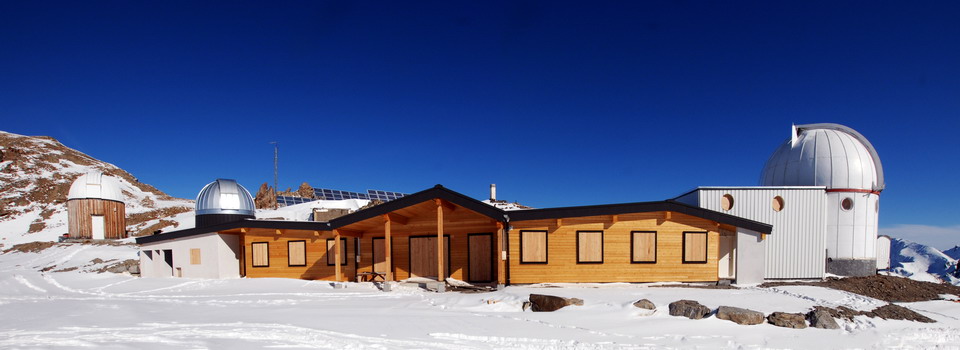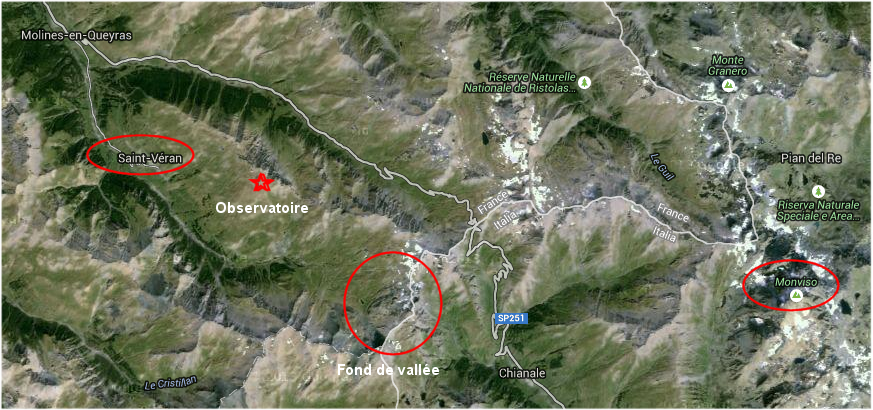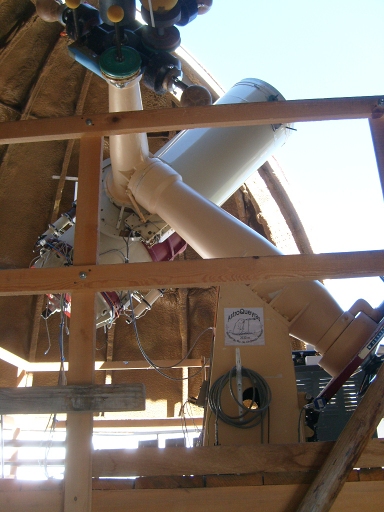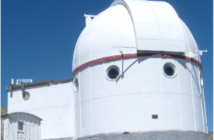AstroQueyras is an observatory located at an altitude of 2930 meters in the deep french Alpes mountains, very close to the italian border. It welcomes one-week amateur missions as well as one-night public stays. It’s equiped with a 620 mm F/15 Cassegrain, a 500 mm F/8 Ritchey-Chrétien and a 200 mm flat-field in three cupolas.
I’m currently participating to a one-week mission with Olympus Mons club from Mons in Belgium, and as I like to pay attention to the meteorological conditions when observing, this is a dreamt occasion for a lowland imager to observe the behavior of high mountains conditions!
A privileged situation
The observatory, the highest in Europe (actually some meters higher than the wordly known Pic du Midi ;) ), is granted with favored conditions, with a very transparent and mostly steady sky, and a very important number of clear nights per year. It’s found on the top of a mountain above the Valley of Queyras, around one thousand meters higher than the Saint Véran village. No need to say that the environnement offers splendid views of the mountains… as well as some refreshing views on wild nature with marmots and edelweiss flowers :)
The figure below ( copyright google map) displays some useful geographical landmarks.
The immediate geographical environnement visible from the observatory is mainly showing the depth of Queyras Valley, and beyond, the majestic Viso mount in Italy (3841 meters). At west (not shown here) is dominating the Massif des Ecrins (4000 m+).
A high mountain climate… but the Mediterranean Sea is not so far away
With such characteristics, the weather at AstroQueyras of course belongs to the moutain climate, with rude winters and short summers. The high altitude brings cooler temperatures than in the valley, and of course a potentialy highly variable meteorology.
But the mountain climate does not fully explain the weather one can expect during a mission. Taking a global view from the whole european continent, AstroQueyras is at extreme south-east France, relatively close to the Mediterranean Sea. This explains in first place the high number of clear nights, because the action centers (high pressures etc.) are the same that dominate the Azur Coast weather, so the weather there is mostly anticyclonic.
What about local conditions ?
The observatory is at the top of the adret, the slope exposed to the Sun (opposite to the ubac). Different meteorological phenomena are going to raise with the adjacent orography.
To be continued: a strange persistant night time wind…
Below: the 620 mm Cassegrain with opened cupola (taken during Venus daytime imaging in 2013 August).





